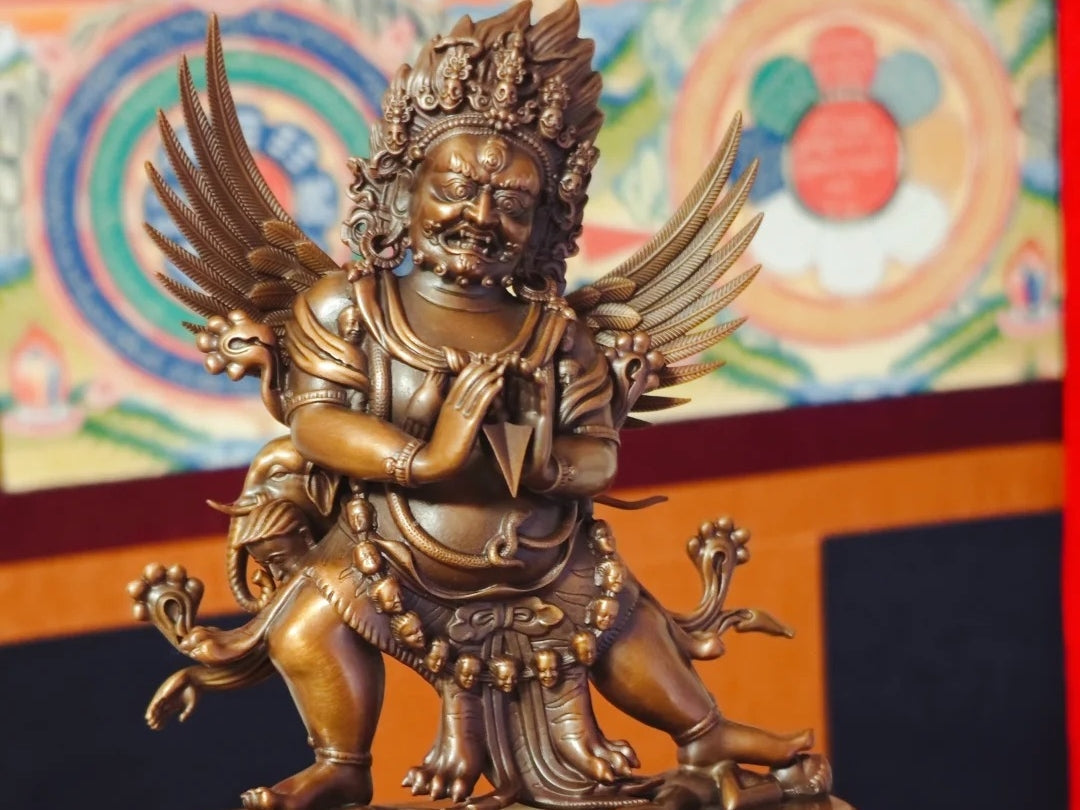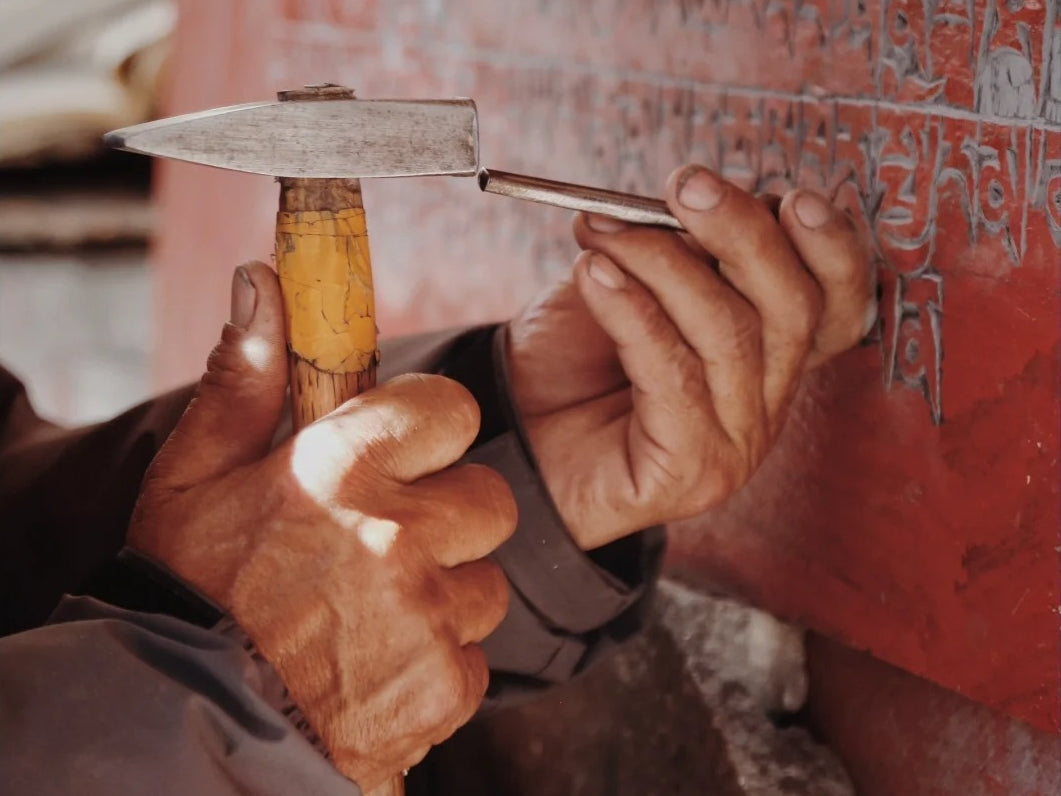In Tibetan Buddhism, Yamantaka (大威德金刚)—also known as “Vajrabhairava” or “The Conqueror of Death”—stands as one of the most powerful wrathful deities. With nine heads, thirty‑four arms, and sixteen legs, his fearsome form symbolizes the fierce compassion and wisdom needed to subdue inner and outer demons. While his iconography may appear intimidating, Yamantaka’s ultimate purpose is to protect the Dharma and guide practitioners toward liberation. Today, wearing a Yamantaka pendant or wrathful deity necklace can serve as a daily reminder of our own power to transform fear into clarity and strengthen our practice.
Symbolism in Yamantaka’s Fierce Form
-
Nine Heads: Each head represents a specific mantra for subduing the lord of death, Yama, and conquering various obstacles to enlightenment. The central buffalo head—with its piercing blue horns—symbolizes Yama himself, while the highest human-like head depicts Manjushri, the Bodhisattva of Wisdom, reminding us that true wrath must be guided by compassionate insight.
-
Thirty‑Four Arms: Holding a host of tantric implements—such as the vajra (diamond thunderbolt), bell, flaming sword, and skull cup—each arm signifies one of the thirty‑four stages of the Bodhisattva path, uniting method (skillful means) with wisdom.
-
Sixteen Legs: These dancing legs represent the sixteen “emptiness” aspects of reality, urging practitioners to step beyond dualistic perceptions and realize the true nature of mind.
Yamantaka’s wrathful visage and martial stance are not expressions of anger but of boundless compassion: with forceful methods, he protects beings from inner afflictions (ignorance, attachment, aversion) and external threats, ensuring the Dharma remains unbroken.

The Legendary Descent of Yamantaka
Legend tells of a time when Yama, the lord of death, threatened to extinguish the Buddha’s teachings. In response, Manjushri manifested in a wrathful form—Yamantaka—to conquer Yama’s pride and preserve the Dharma. Emerging in a realm shrouded by storm clouds and jagged peaks, Yamantaka strode forth, his many arms flashing with tantric weapons. Where he stepped, darkness receded; where he pointed, ignorance fell away. His victory established him as the Dharmapala, the unshakeable protector whose energy continues to shield practitioners.
Practice: Visualization, Mantra, and Empowerment
Yamantaka practice is considered one of the most potent Vajrayana methods. Under the guidance of an experienced lama, practitioners:
-
Visualize Yamantaka’s form in vivid detail—invoking each head, arm, and leg—to embody his wrathful compassion.
-
Recite the Yamantaka mantra:
“Oṃ Yāma Vajrabhairava Hūṃ Hā Hā Vajra Trāyā”
This mantra activates purification and protection energies, cutting through karmic obstacles. -
Offer tormas (ritual cakes), incense, and lights to honor Yamantaka’s vow to protect all beings.
Over time, this practice cultivates inner strength, clarity of mind, and an unshakable commitment to wakeful awareness.
Yamantaka in Jewelry: Carrying Protection Close to the Heart
In modern life, we face daily stresses and subtle fears. Wearing Yamantaka jewelry—from detailed thangka‑inspired pendants to sterling silver wrathful deity necklaces—turns our adornments into functional talismans:
-
Protection: Yamantaka’s fierce image serves as a shield against negativity and self‑doubt.
-
Empowerment: His energy reminds us to confront challenges with fearless compassion.
-
Mindfulness: Each glance at the pendant calls us back to present‑moment awareness and the transformative power of wrathful wisdom.
At QiLing Aura, each Yamantaka necklace is crafted to preserve the deity’s intricate iconography—nine heads, thirty‑four arms, sixteen legs—in miniature form. Detailed engravings or hand‑painted accents on a gawu‑style pendant box capture both the wrathful majesty and compassionate heart of the Conqueror of Death.

Embrace Wrathful Compassion Daily
Yamantaka’s fierce compassion might seem paradoxical, but it holds a profound lesson: true kindness sometimes requires strength. By wearing wrathful deity jewelry, we carry that teaching into everyday life—reminding ourselves that with clarity and courage, we can transform fear into freedom, protect what matters most, and walk the path of awakening with unwavering resolve.




